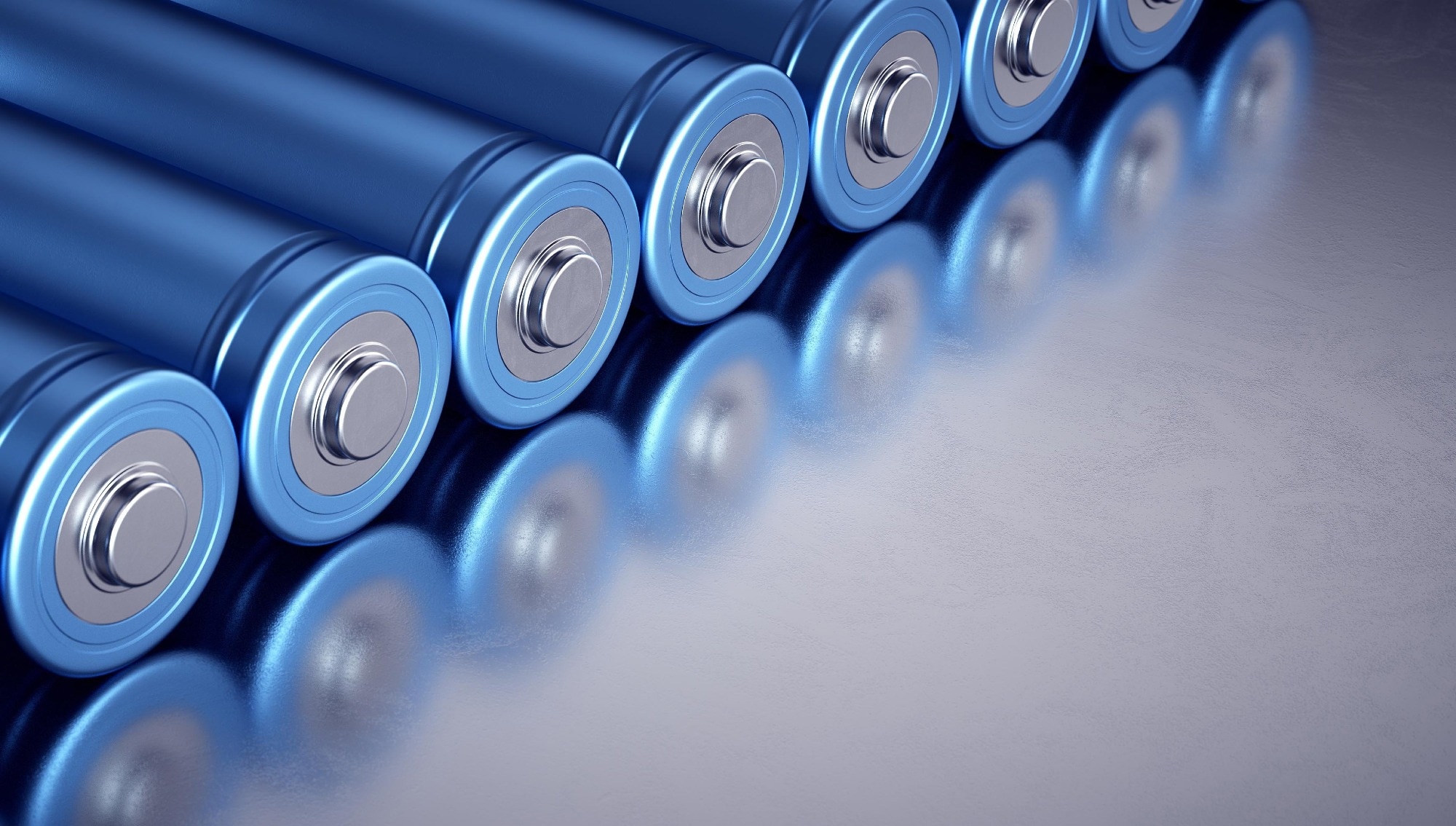 By Muhammad OsamaReviewed by Lexie CornerMay 6 2025
By Muhammad OsamaReviewed by Lexie CornerMay 6 2025A recent article in Advanced Science introduces a new class of water-processable, halogen-free polymeric solid-state electrolytes (SSEs) designed to improve the performance and environmental profile of lithium-based energy storage systems.
These sustainable SSEs integrate lithium-regulating polymers to enhance safety, efficiency, and long-term viability in applications like supercapacitors and next-generation batteries.

Image Credit: Negro Elkha/Shutterstock.com
Moving Toward Safer, Solid-State Electrolytes
In recent years, polymeric SSEs have gained attention as a safer, more adaptable alternative to traditional liquid-state electrolytes (LSEs) in energy storage devices like supercapacitors and rechargeable batteries.
Their solid-state form reduces the risk of leaks and flammability, and their mechanical flexibility makes them well-suited for next-generation electronics. However, one persistent challenge is their relatively low ionic conductivity, which stems from limited ion mobility within the polymer matrix.
To overcome this, researchers have investigated various enhancement strategies, including the addition of inorganic fillers, ionic liquids, plasticizers, and secondary polymers—each designed to improve ion transport without sacrificing safety or structural performance.
More recently, development efforts have increasingly focused on environmentally friendly, halogen-free materials. This shift not only supports sustainability goals but also ensures compliance with safety regulations by eliminating the use of hazardous halogenated lithium salts.
A Water-Based, Halogen-Free Breakthrough
The authors developed and characterized a new class of water-processable polymeric SSEs using lithium hydroxide (LiOH), branched poly(ethylene imine) (bPEI), and poly(4-styrene sulfonic acid) (PSSA). They optimized ionic conductivity and electrochemical performance by varying the molar ratio of PSSA to bPEI (up to 60 mol%).
The SSEs, collectively called bPEI:LiOH: PSSA electrolytes (PLP SSE), were synthesized by preparing a binary bPEI: LiOH solution at a fixed molar ratio and gradually adding PSSA. The resulting formulations were cast into thin films and integrated into asymmetric supercapacitors using indium tin oxide (ITO) as the cathode and graphite-based materials as the anode.
To evaluate their properties, the researchers used field emission scanning electron microscopy (FE-SEM), Raman spectroscopy, and galvanostatic charge/discharge (GCD) testing.
The optimized formulation achieved an ionic conductivity of approximately 6 mS cm-1, significantly outperforming many conventional polymeric electrolytes. Structural, thermal, and electrochemical assessments further confirmed that increased PSSA content enhanced lithium-ion transport.
Key Performance Metrics and Findings
The outcomes showed that the polymer-based SSEs achieved peak ionic conductivity of approximately 6 mS cm-1 at a PSSA molar ratio of 40 %, facilitating efficient lithium-ion transport through the formation of SO₃⁻ Li⁺ (sulfate anion lithium cation) units and well-organized nano/micro-domains. Electrochemical testing indicated that supercapacitors using these SSEs reached a maximum potential of 2.24 V at a current density of 0.2 mA g⁻¹.
Endurance tests demonstrated 96.2 % capacitance retention after 5000 cycles and maintained functionality at elevated temperatures (up to 80 °C) despite a slight reduction in conductivity.
Morphological analysis using FE-SEM showed that increasing the PSSA content refined the electrolyte’s microstructure, specifically by reducing the size of LiOH domains and enhancing lithium-ion mobility. Importantly, the devices could power both single and series-connected LEDs, demonstrating their practical potential for real-world energy applications.
Download your PDF copy now!
Toward Scalable, Sustainable Energy Solutions
The development of these halogen-free, water-processable polymer electrolytes marks a promising advance in sustainable energy storage. With high ionic conductivity, strong thermal stability, and robust cycling performance, the PLP SSEs offer a safer and more eco-conscious alternative to traditional materials.
Their compatibility with water-based processing methods also supports scalability, making them a practical candidate for mass production. These features position the SSEs for use in various technologies—from portable electronics and electric vehicles to renewable energy systems.
Journal Reference
Murukadas, D., Kim, H., & Kim, Y. Pronounced Role of Lithium-Controlling Polymer in Water-Processable/Halogen-Free All-Solid-State Electrolytes for Lithium Supercapacitors. Advanced Science, 2417745 (2025). DOI: 10.1002/advs.202417745, https://advanced.onlinelibrary.wiley.com/doi/10.1002/advs.202417745
Disclaimer: The views expressed here are those of the author expressed in their private capacity and do not necessarily represent the views of AZoM.com Limited T/A AZoNetwork the owner and operator of this website. This disclaimer forms part of the Terms and conditions of use of this website.